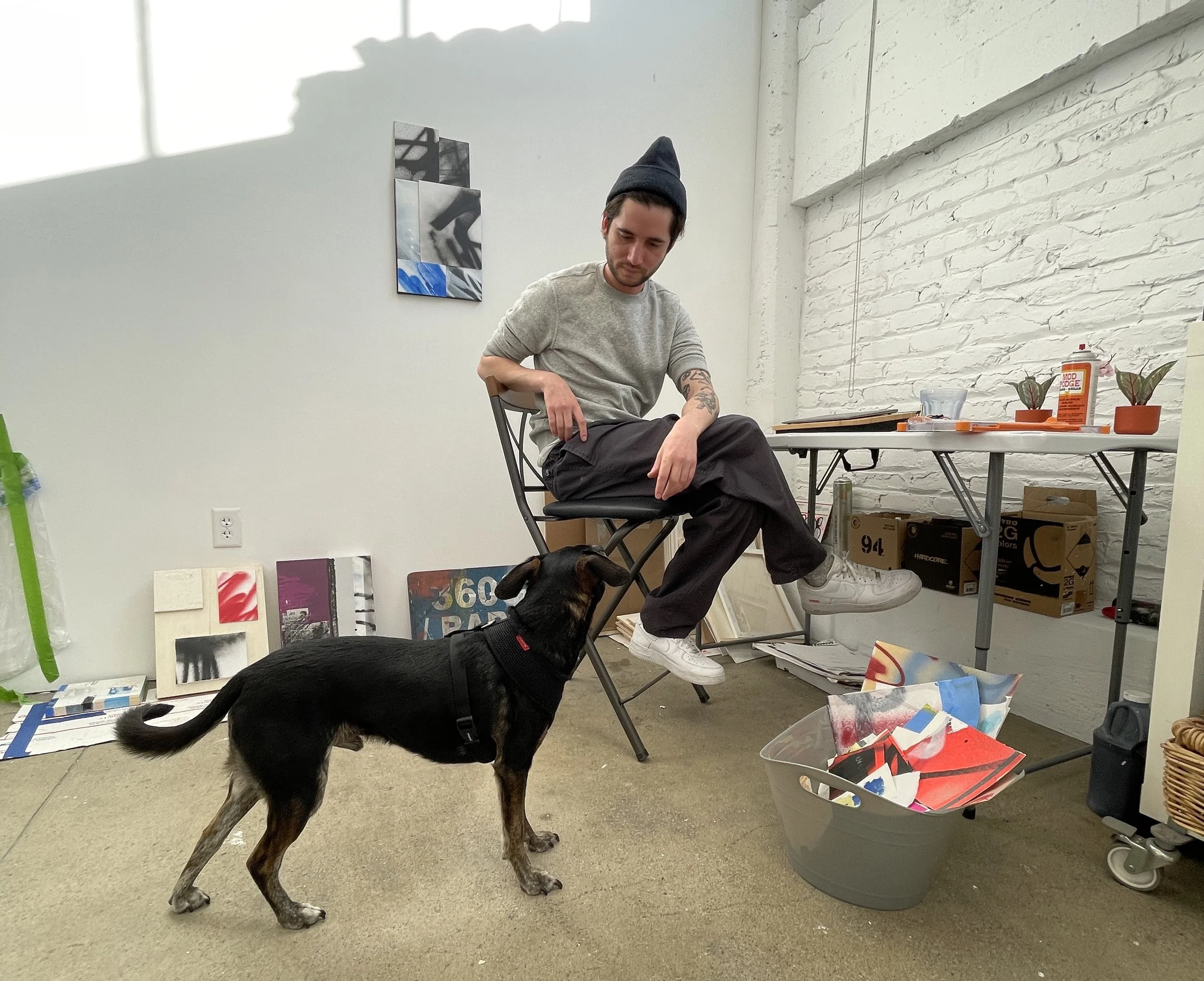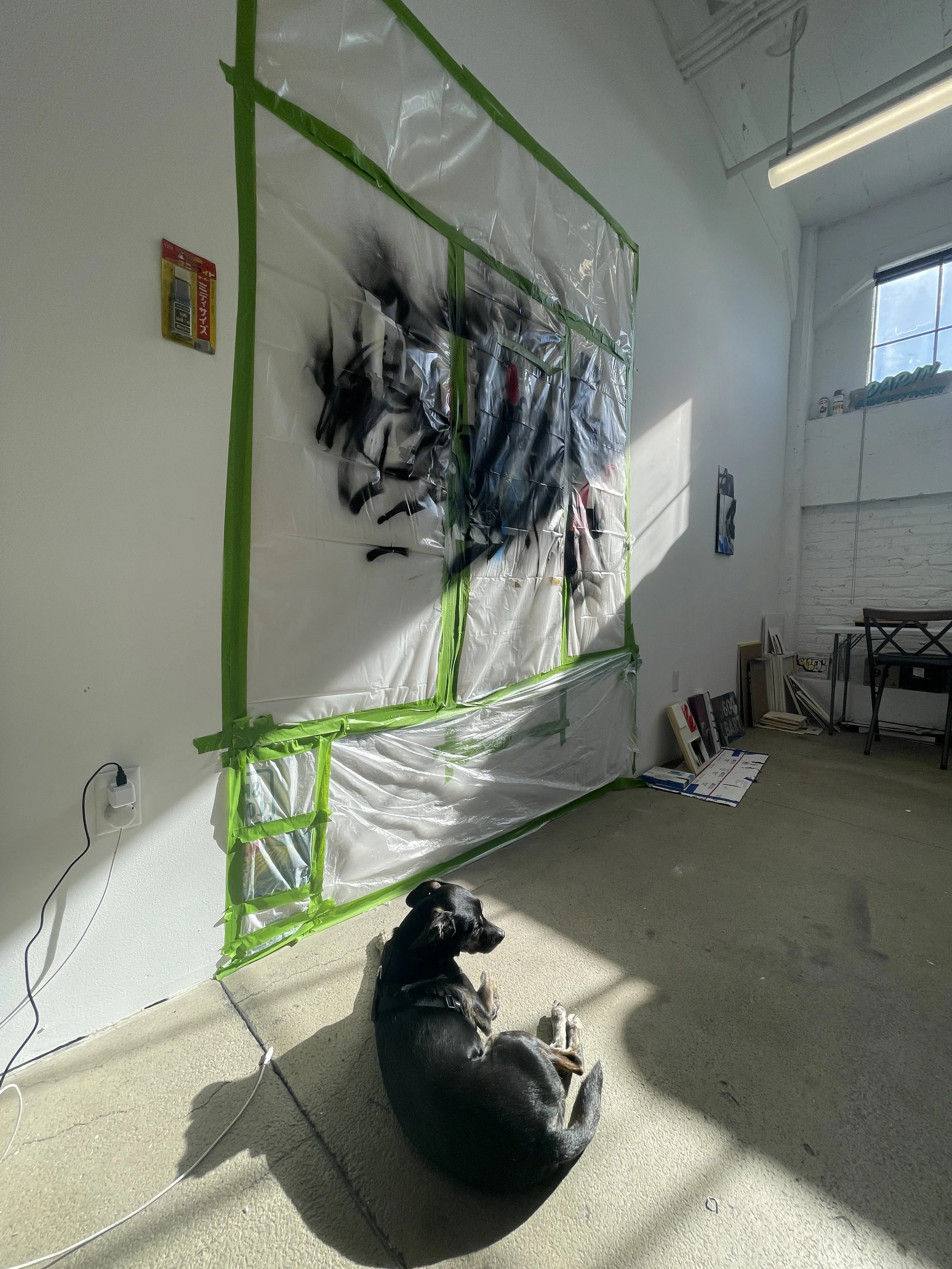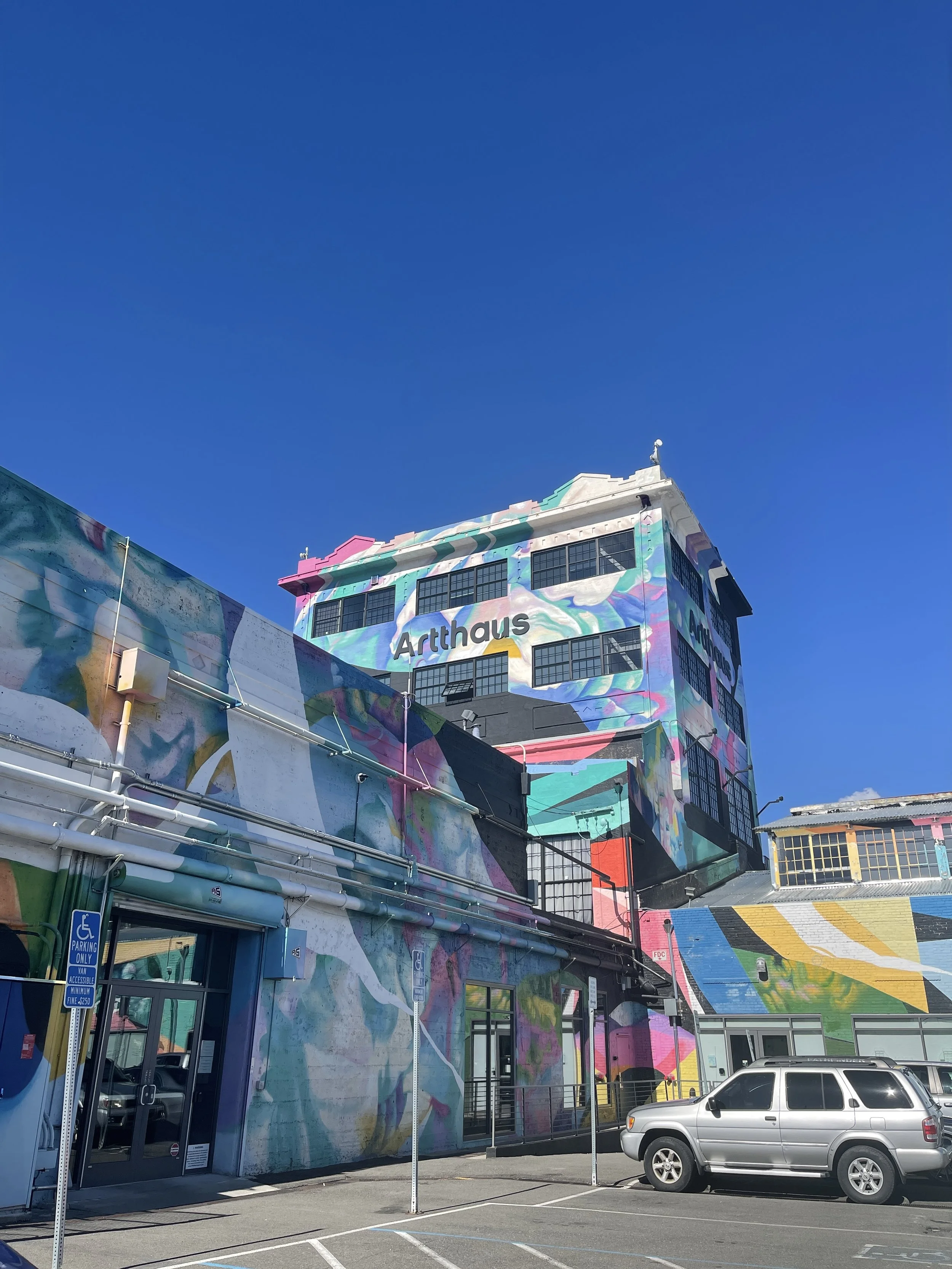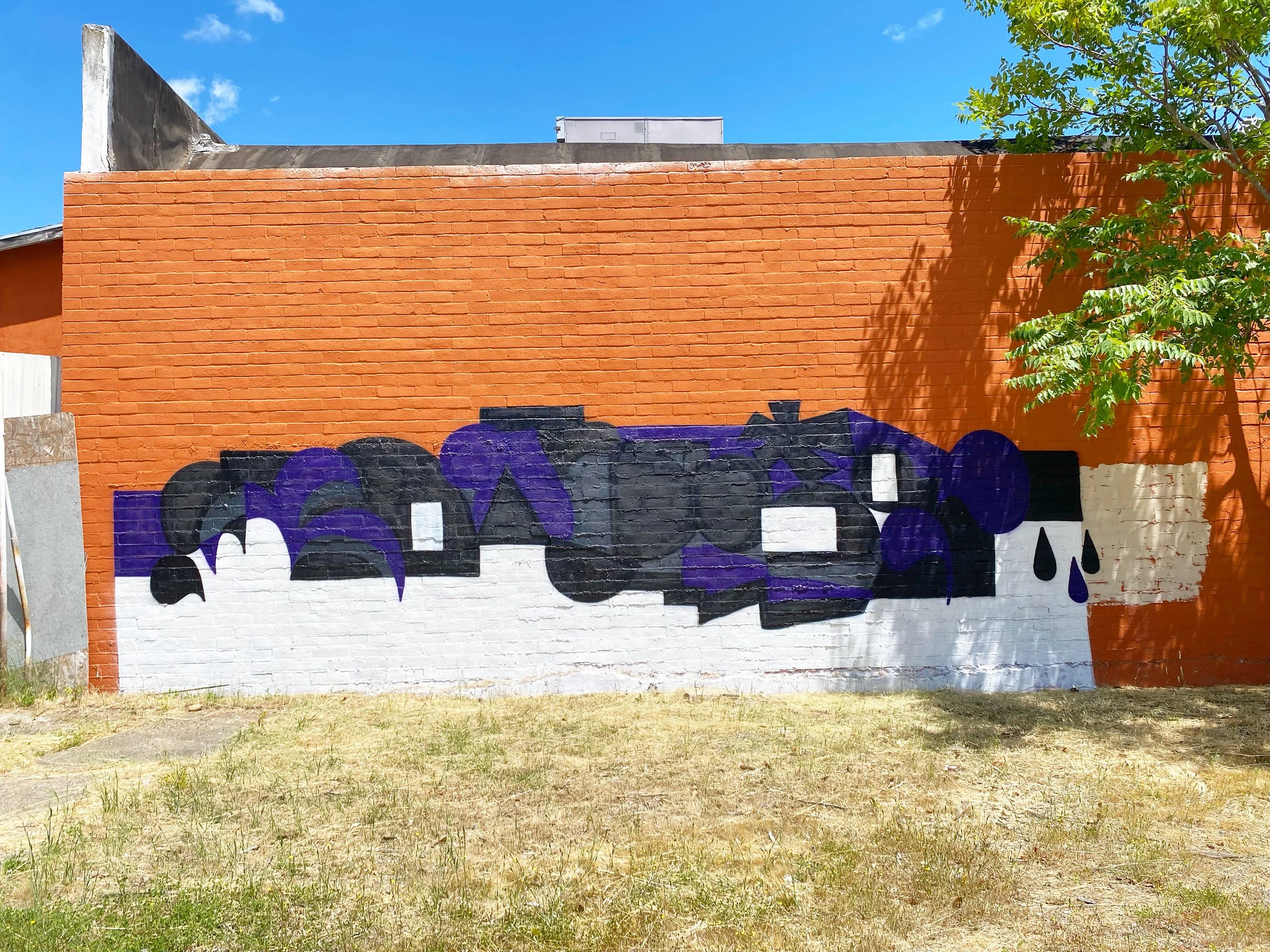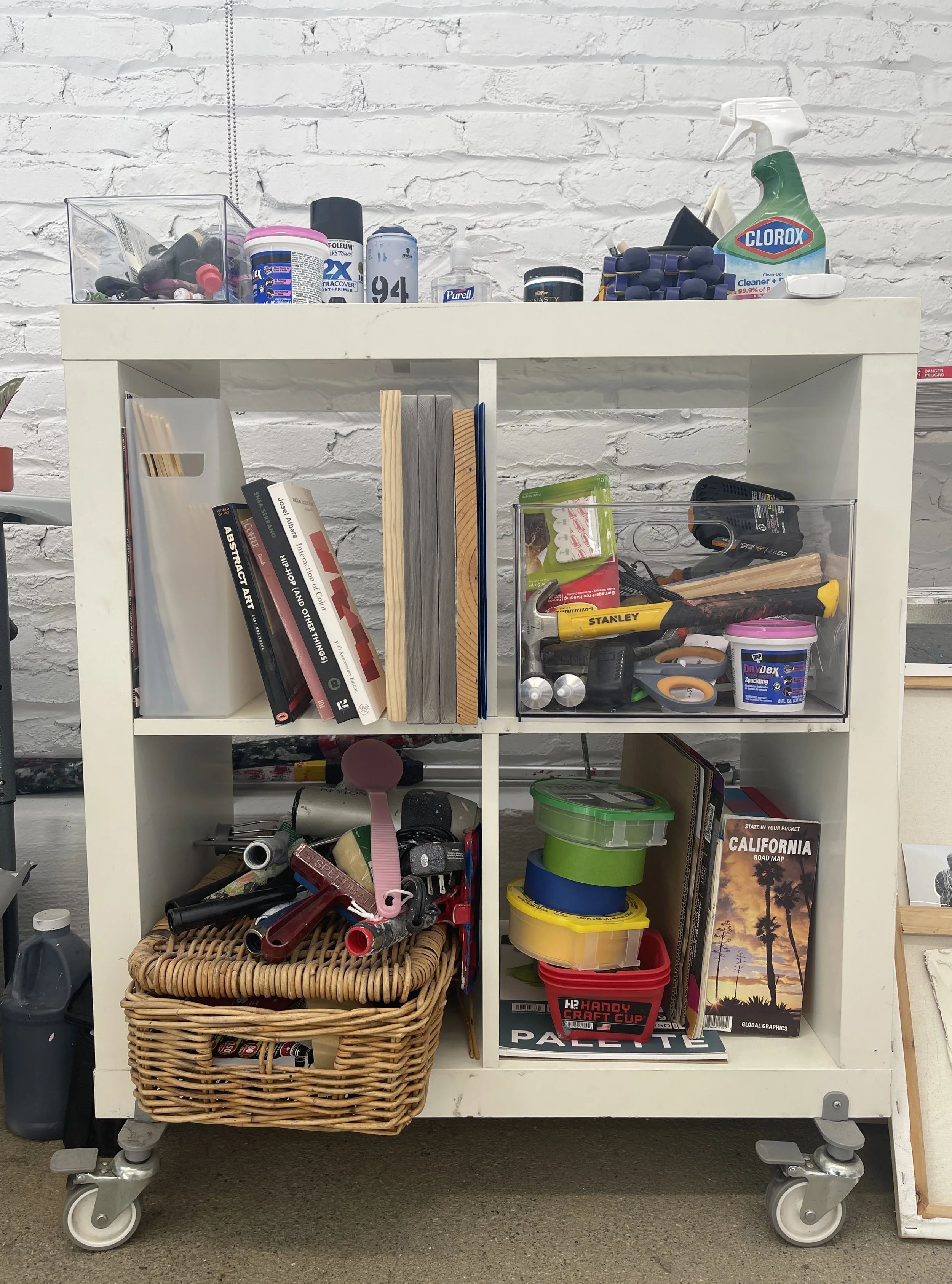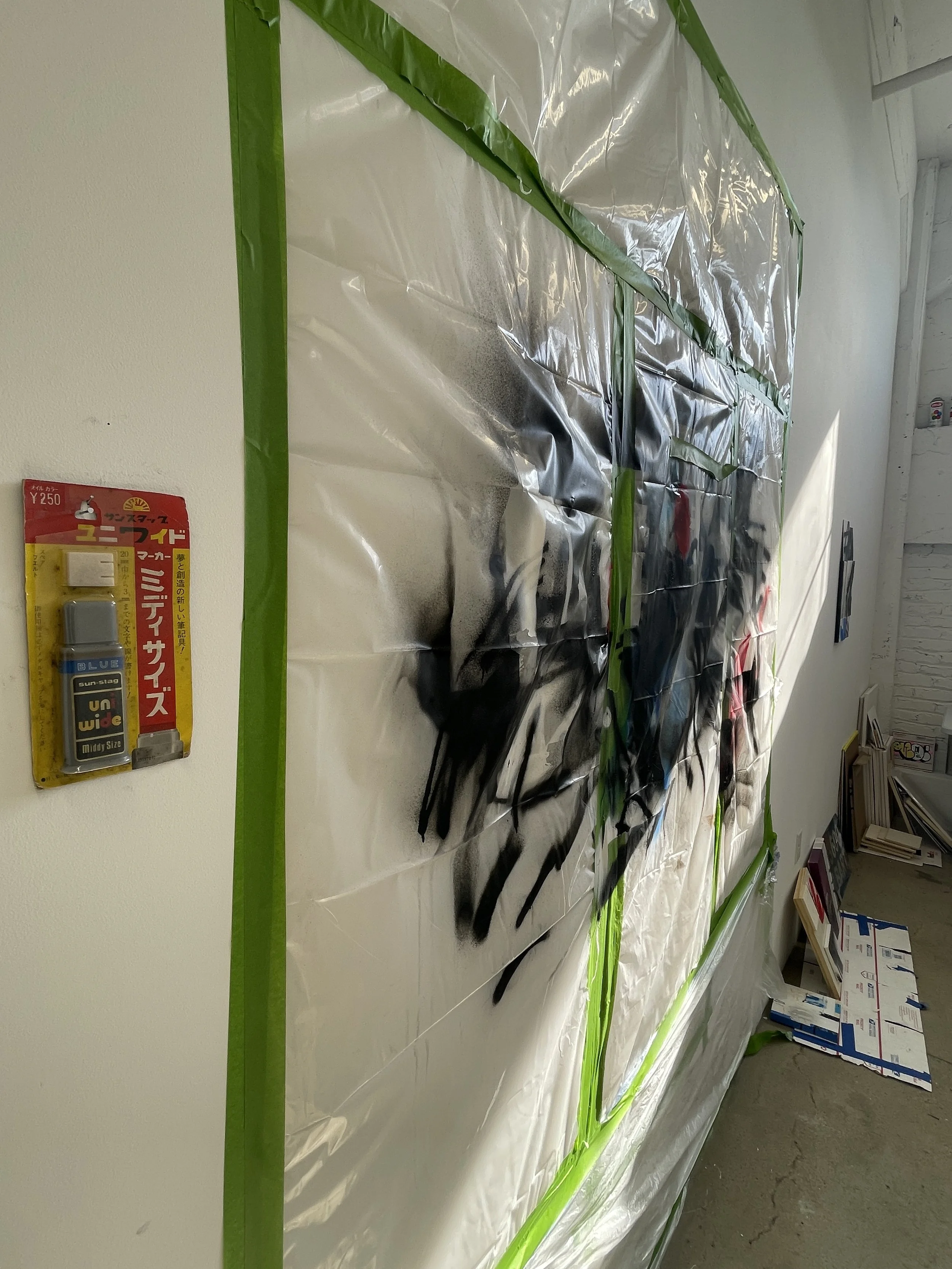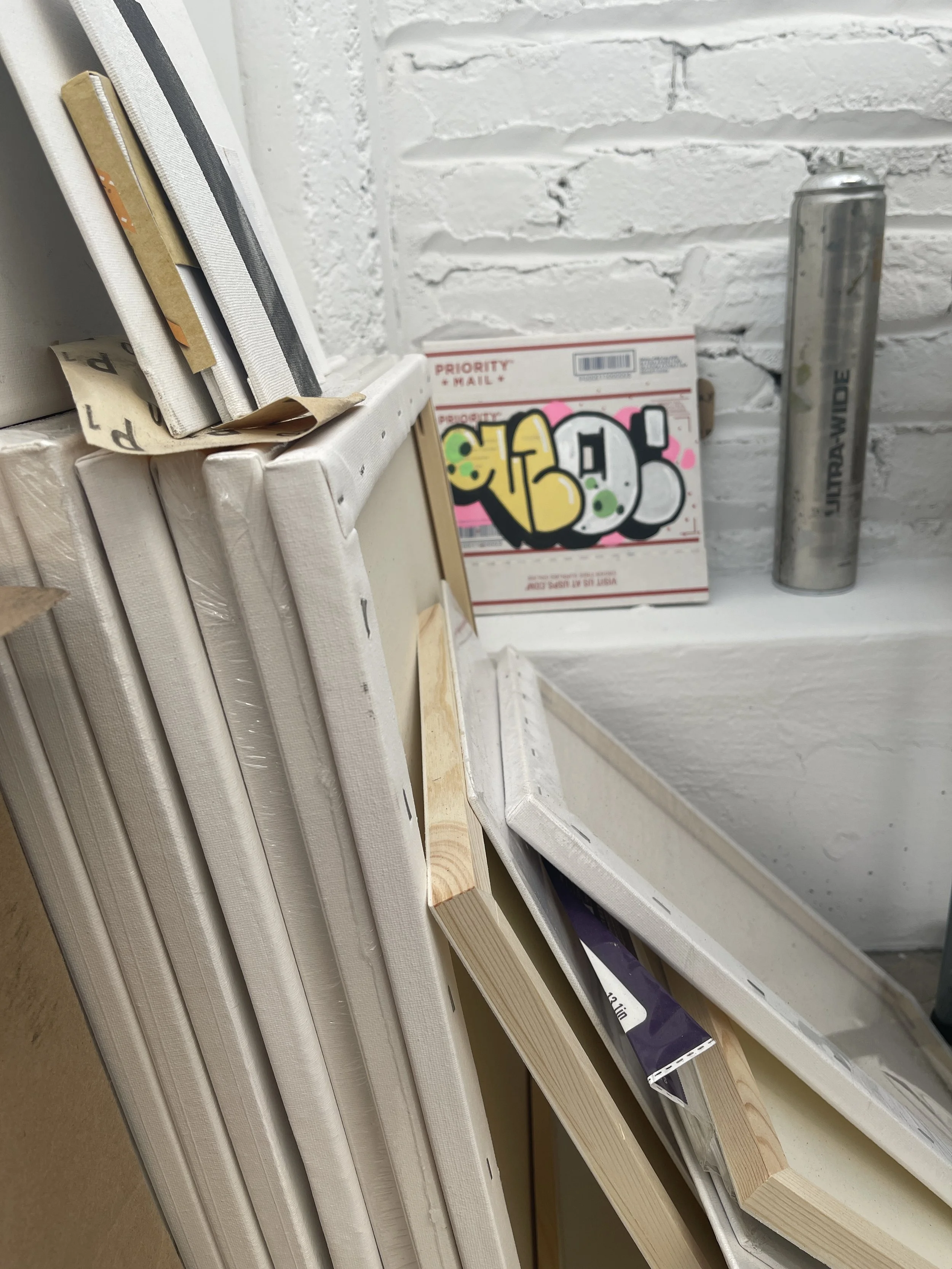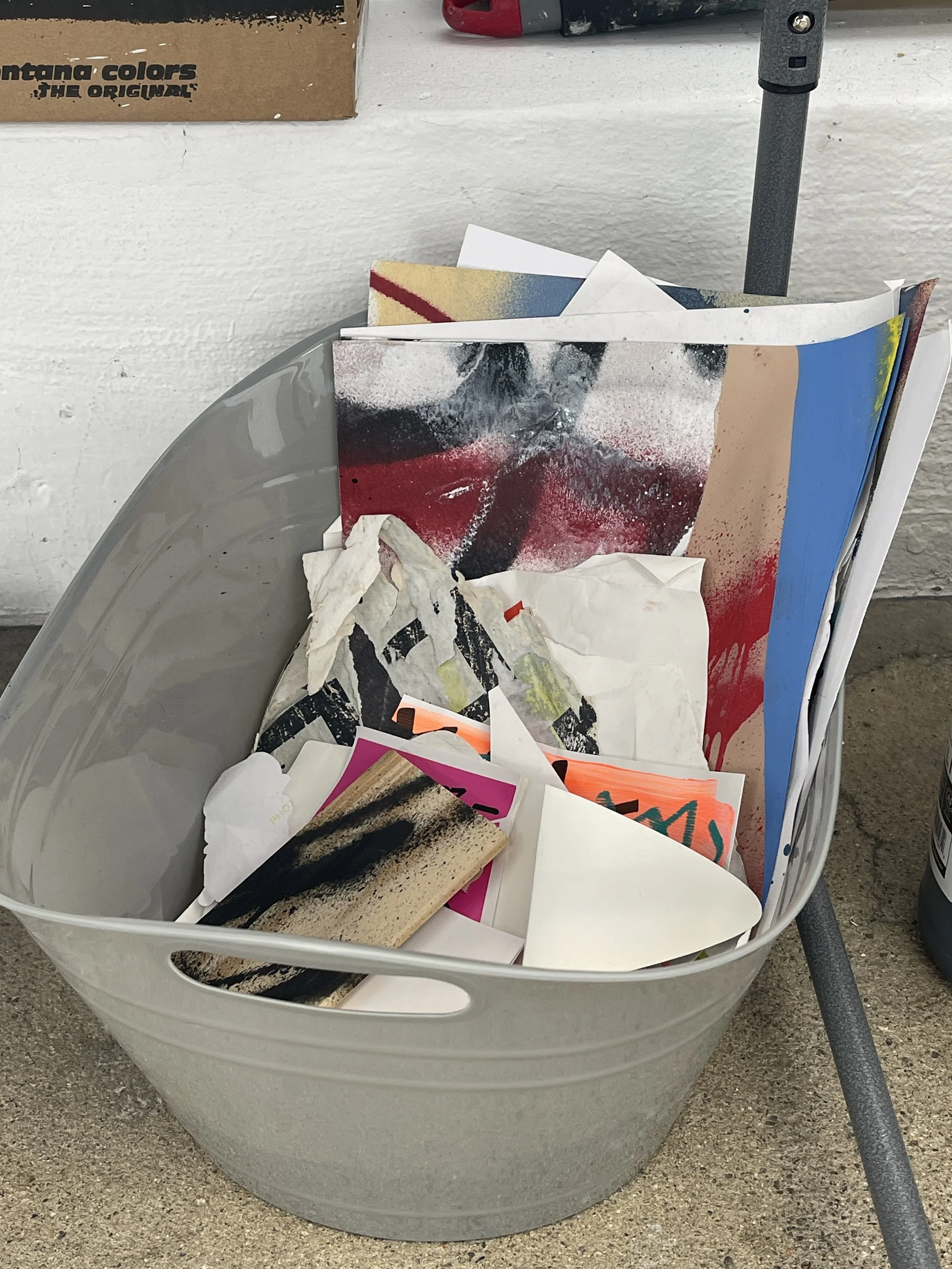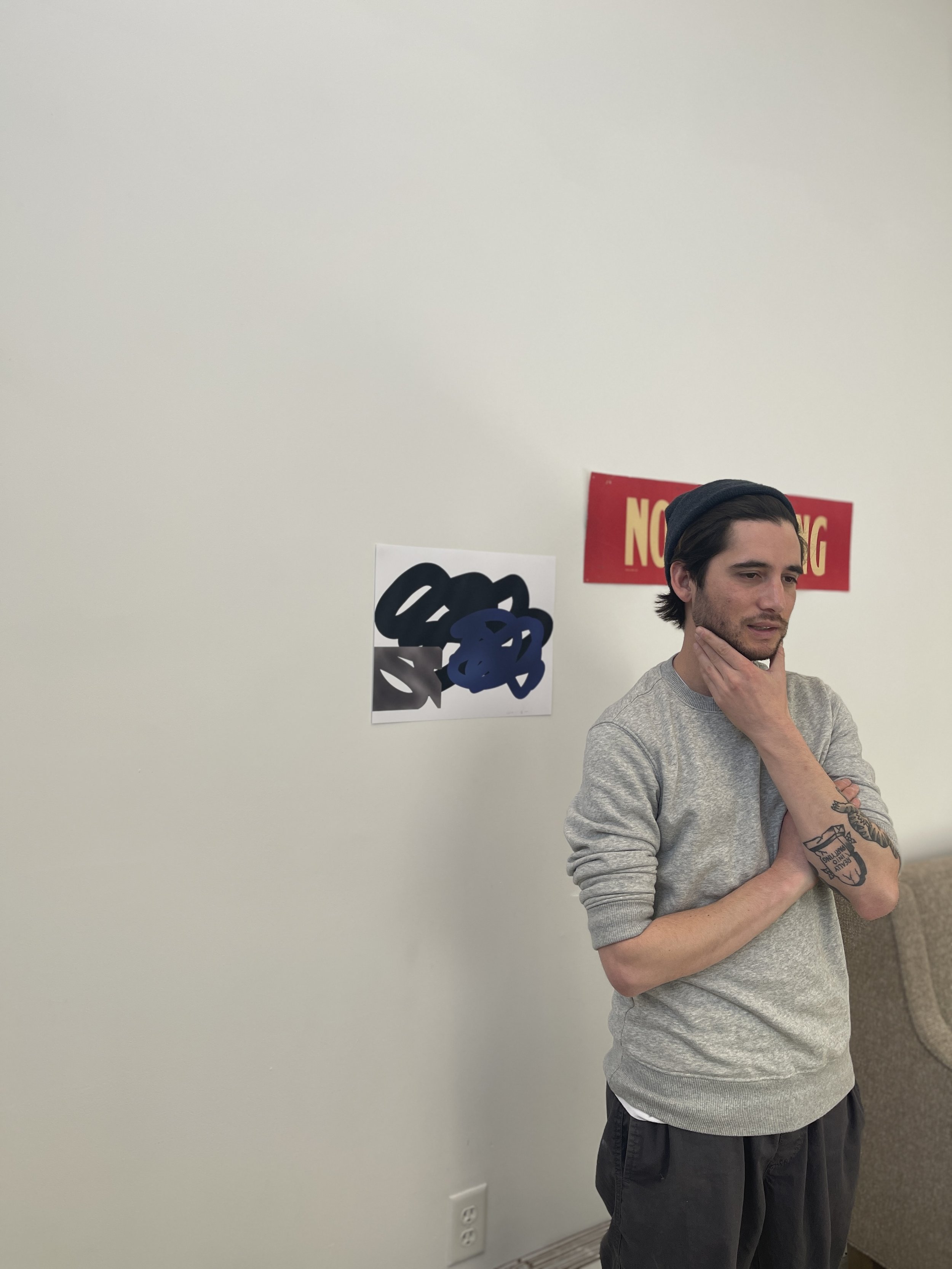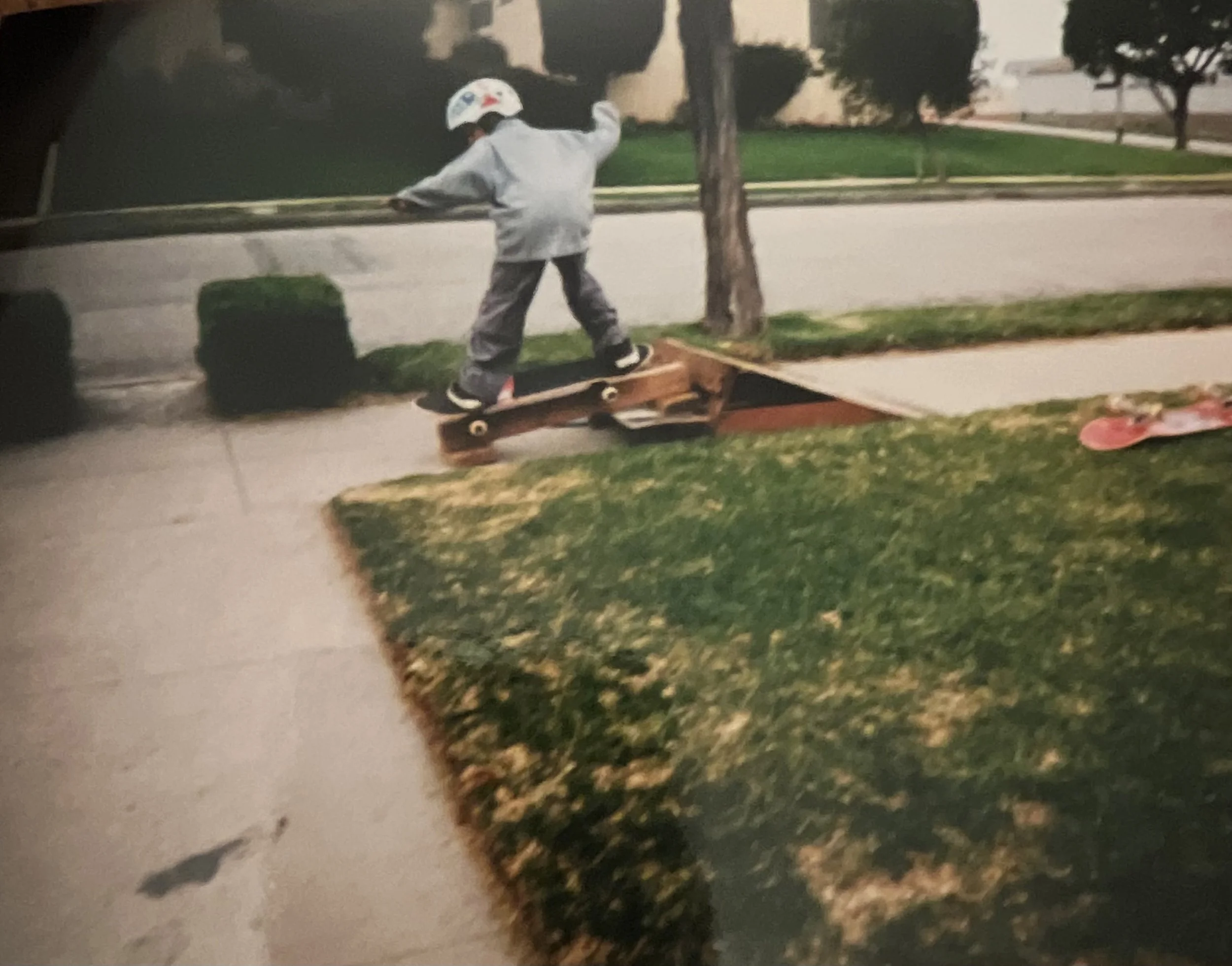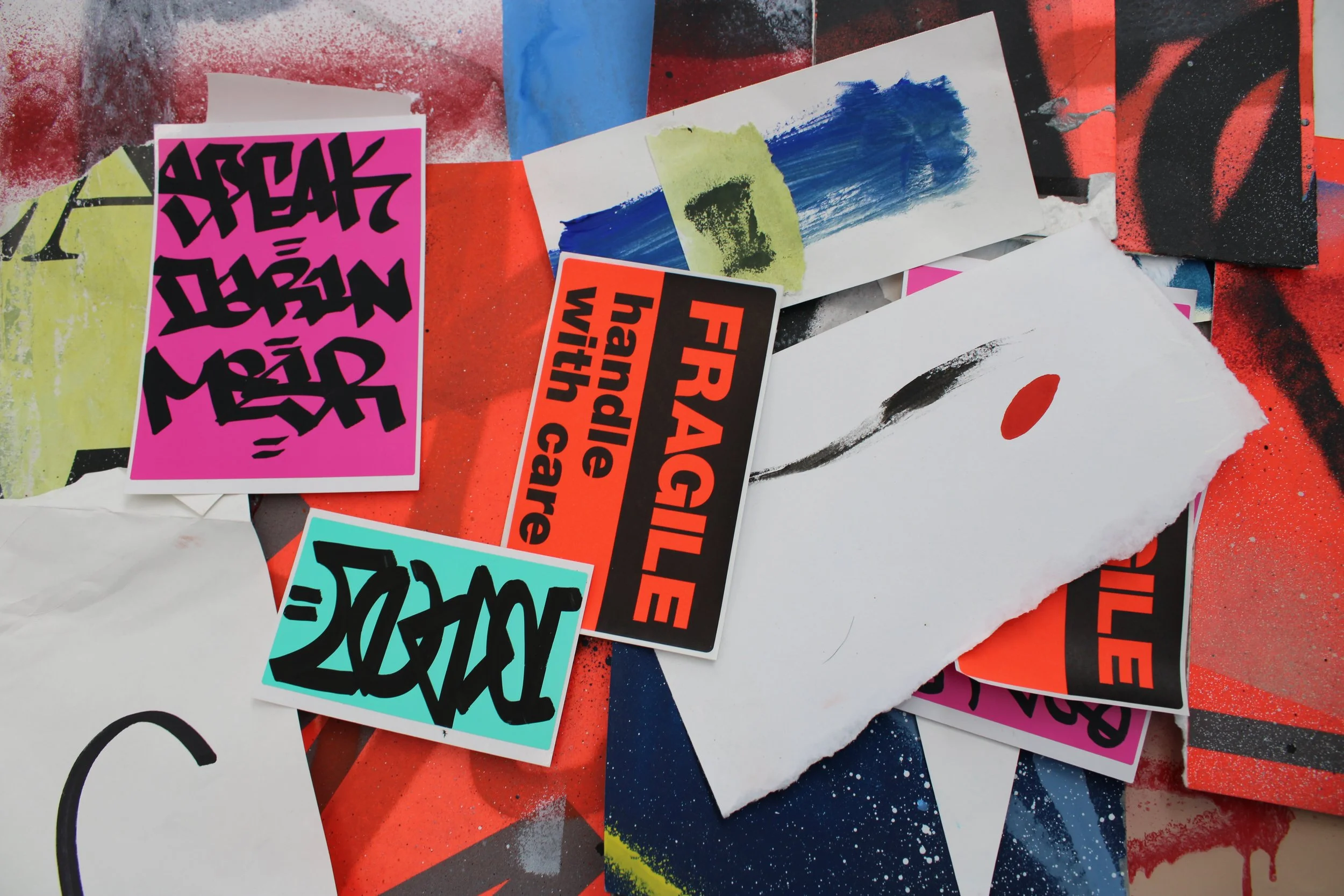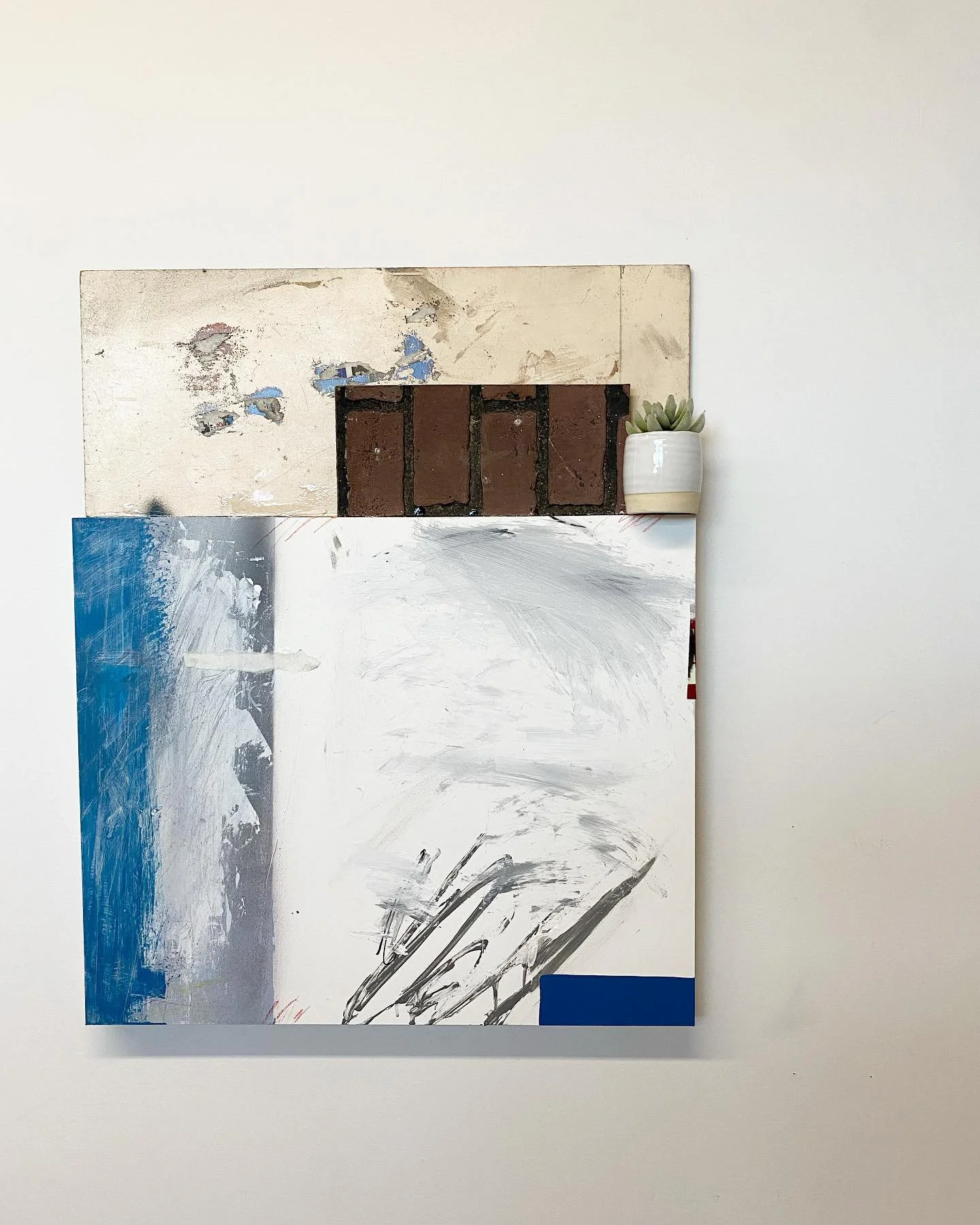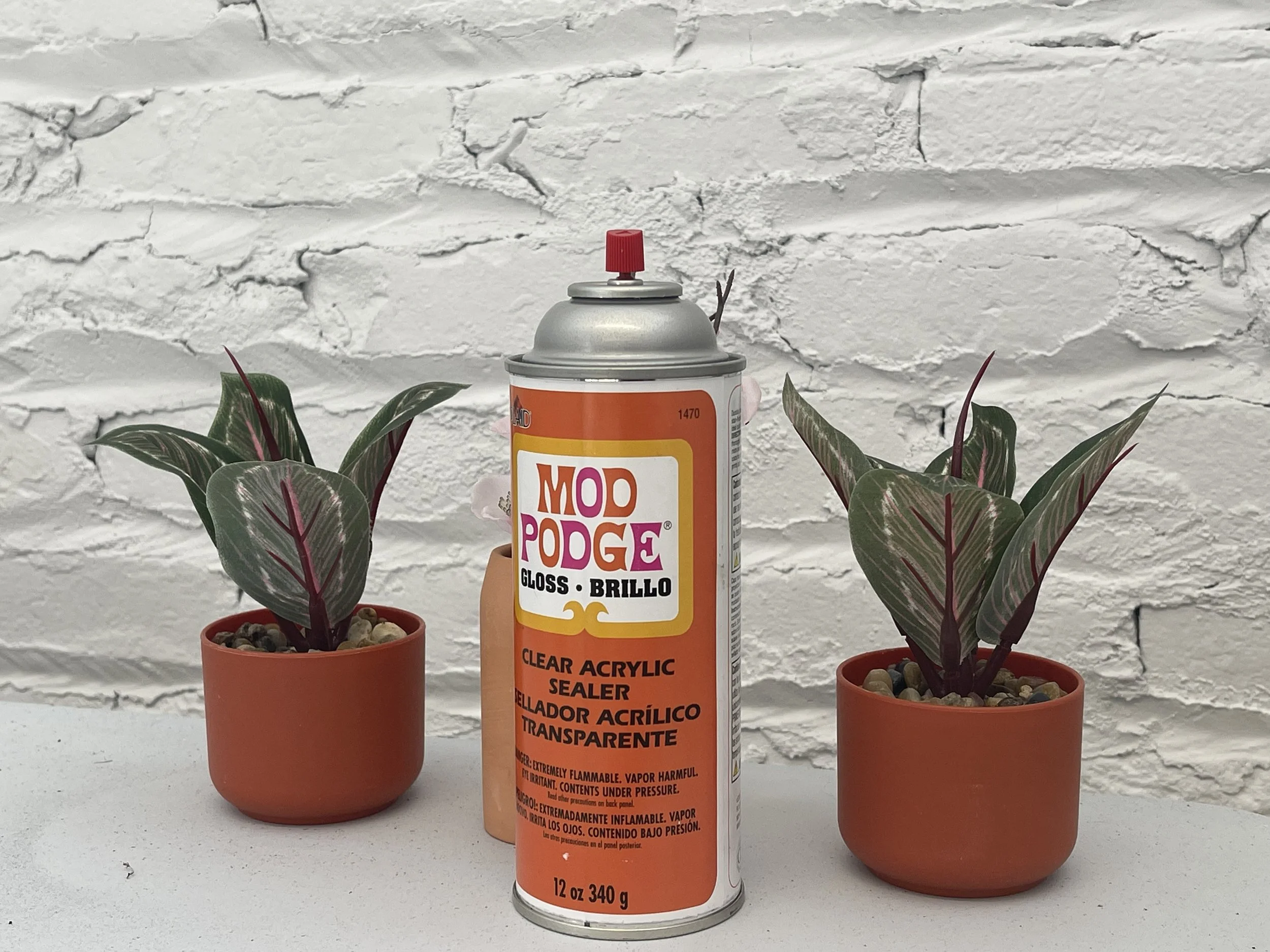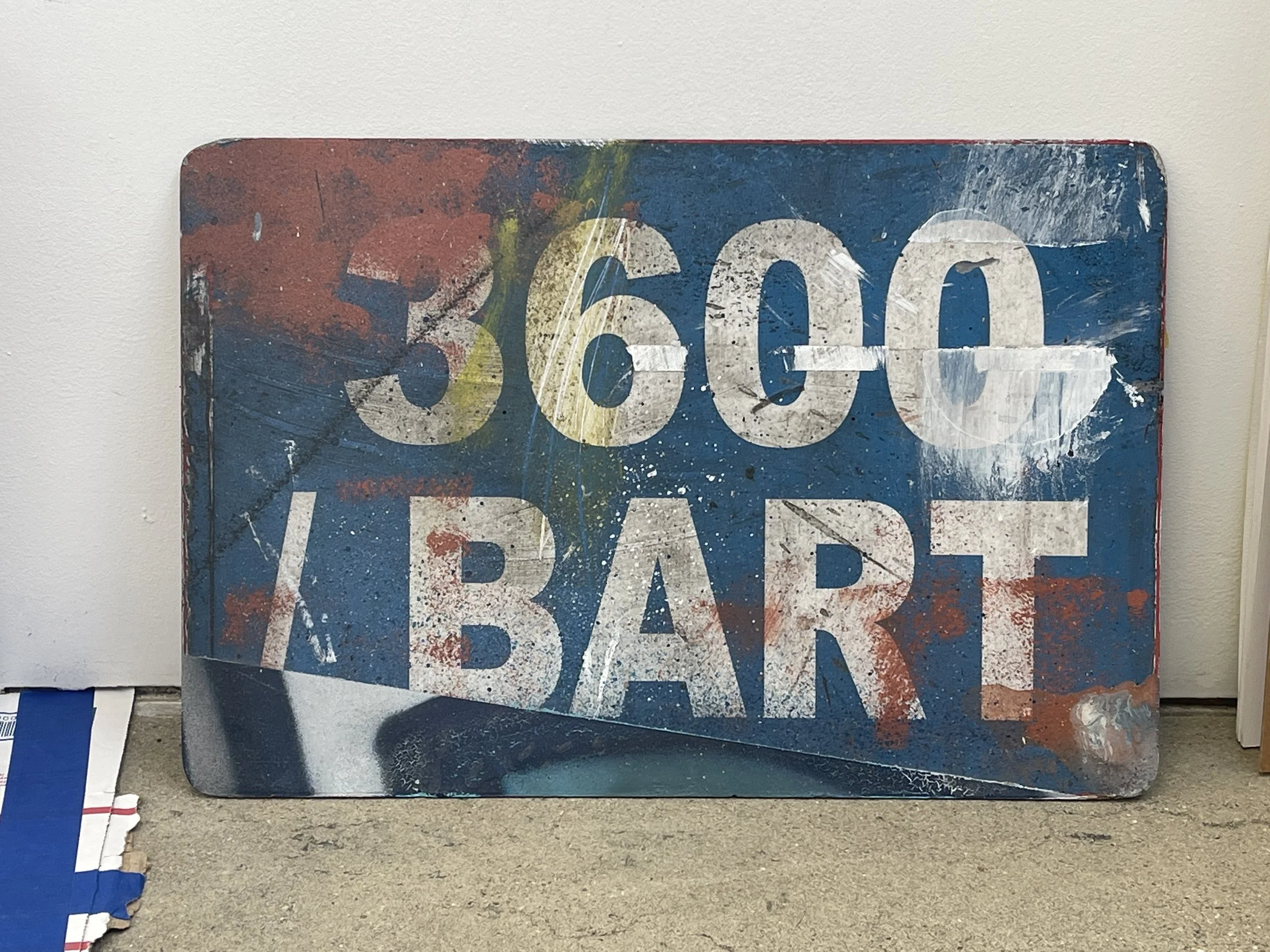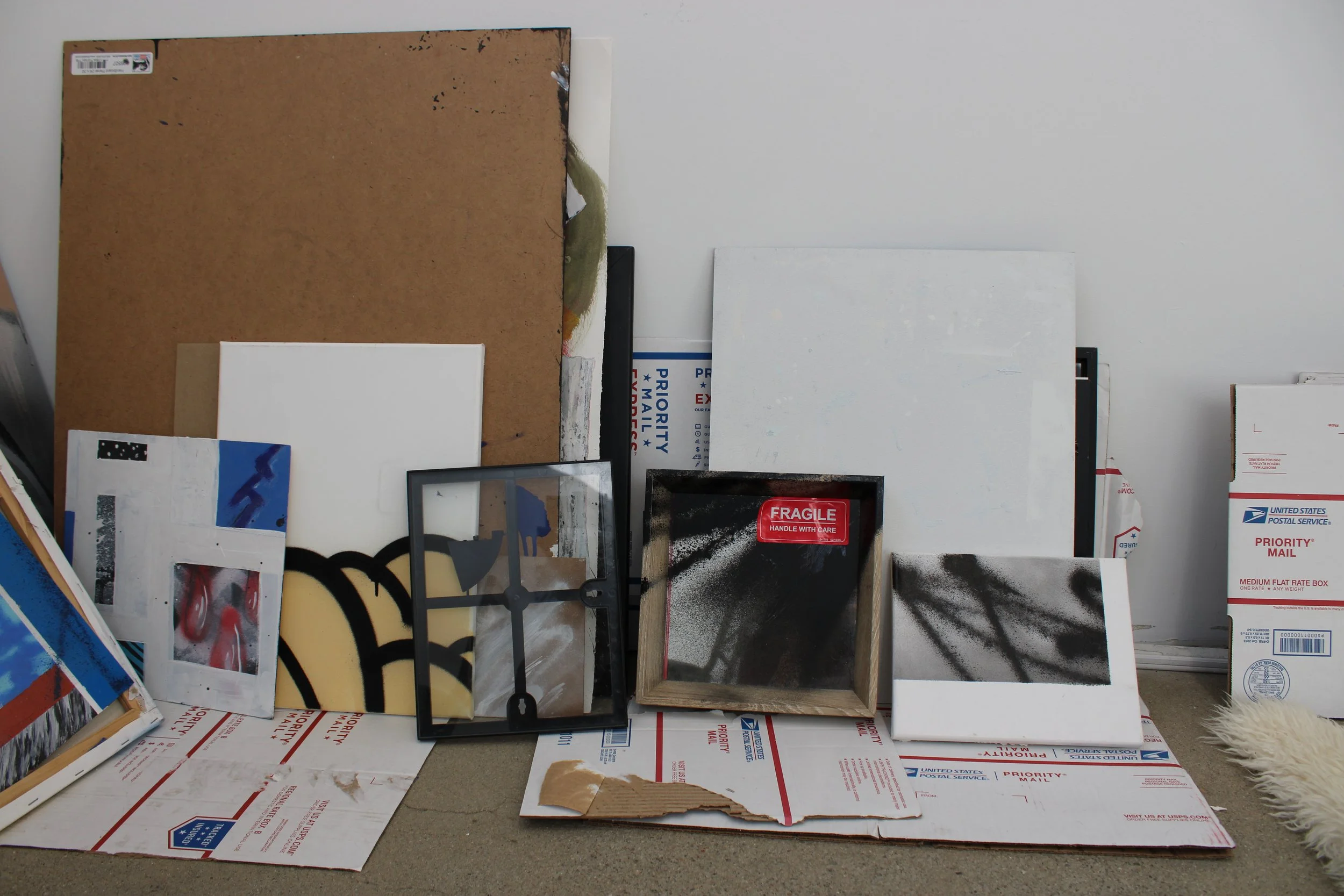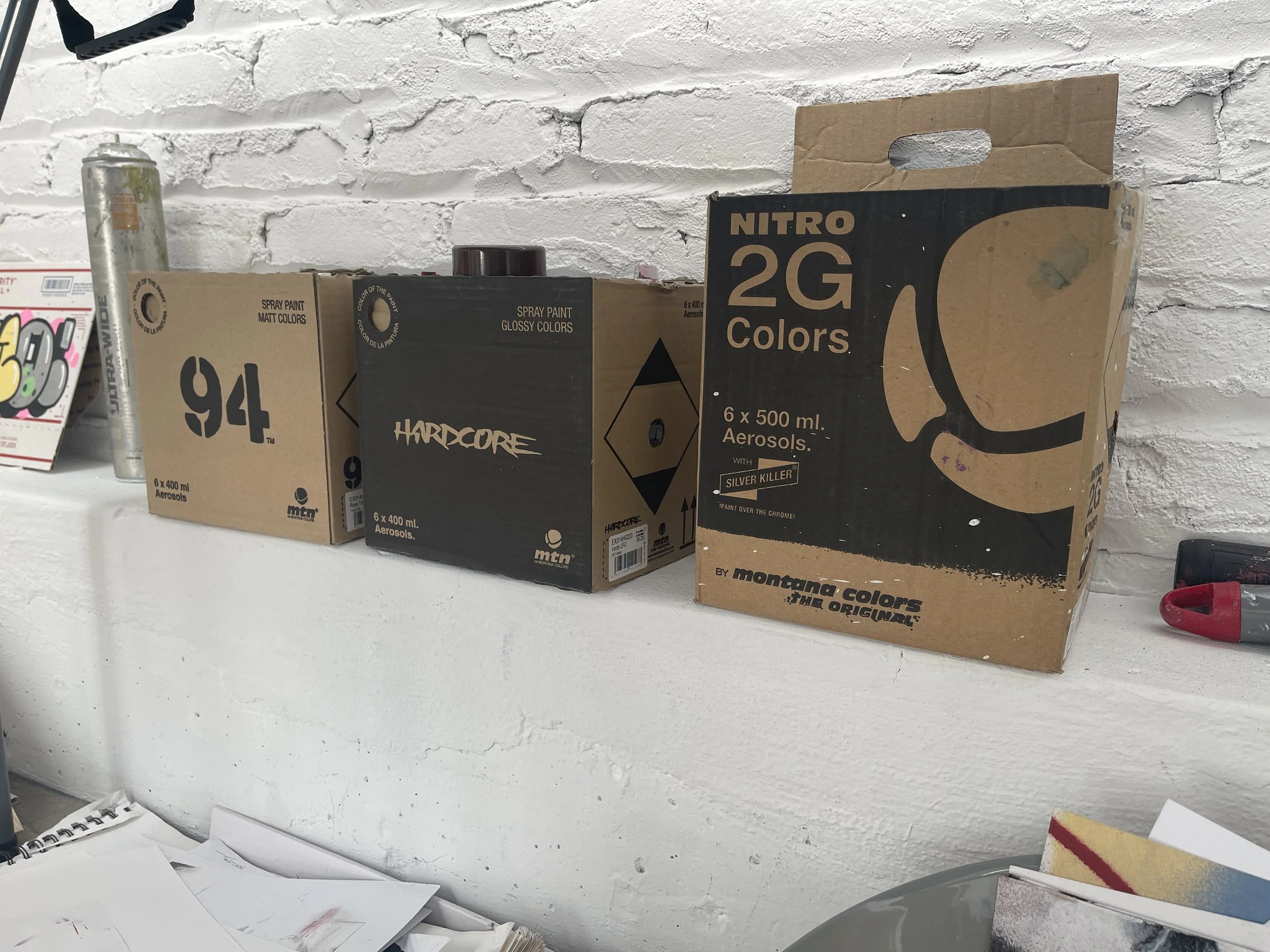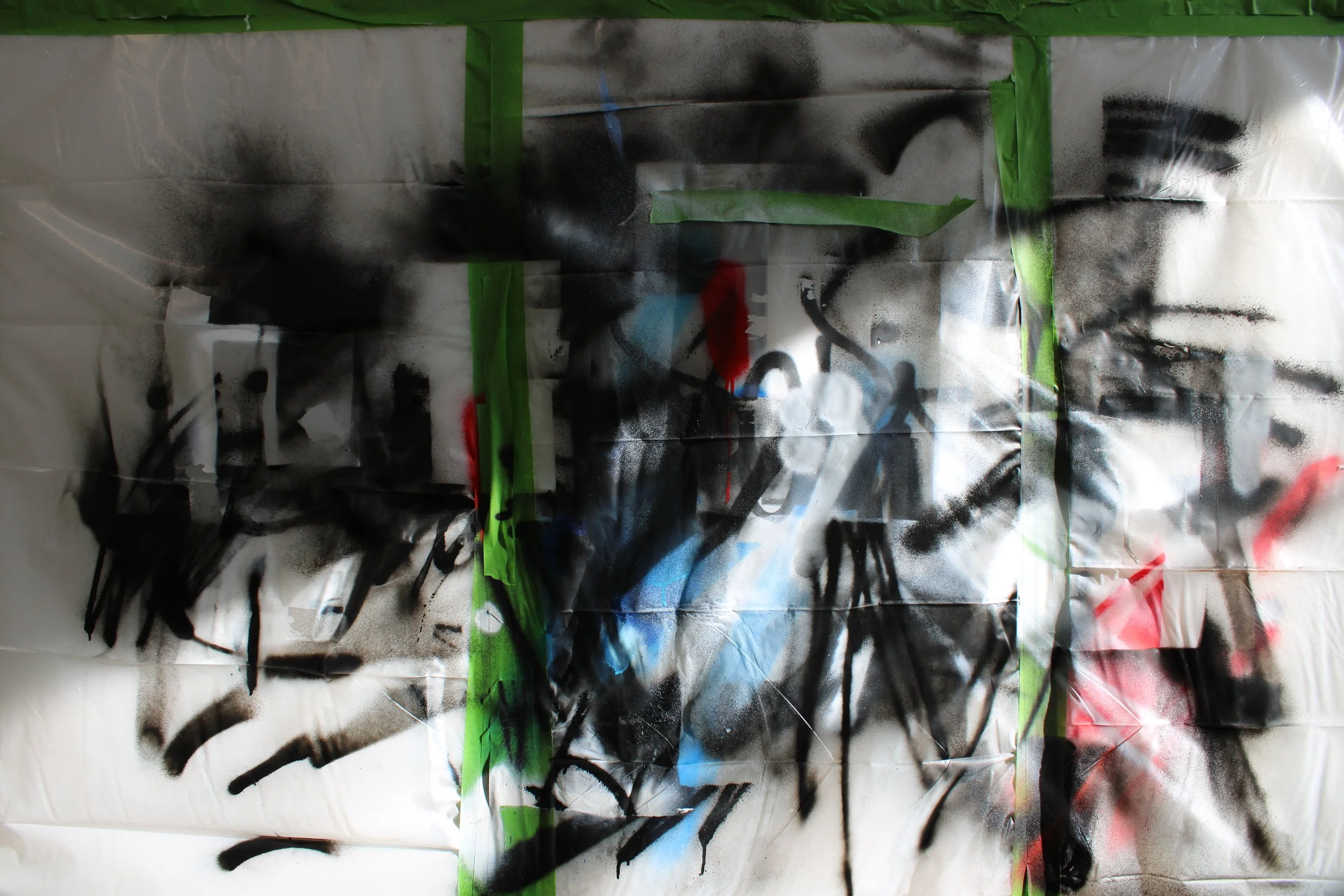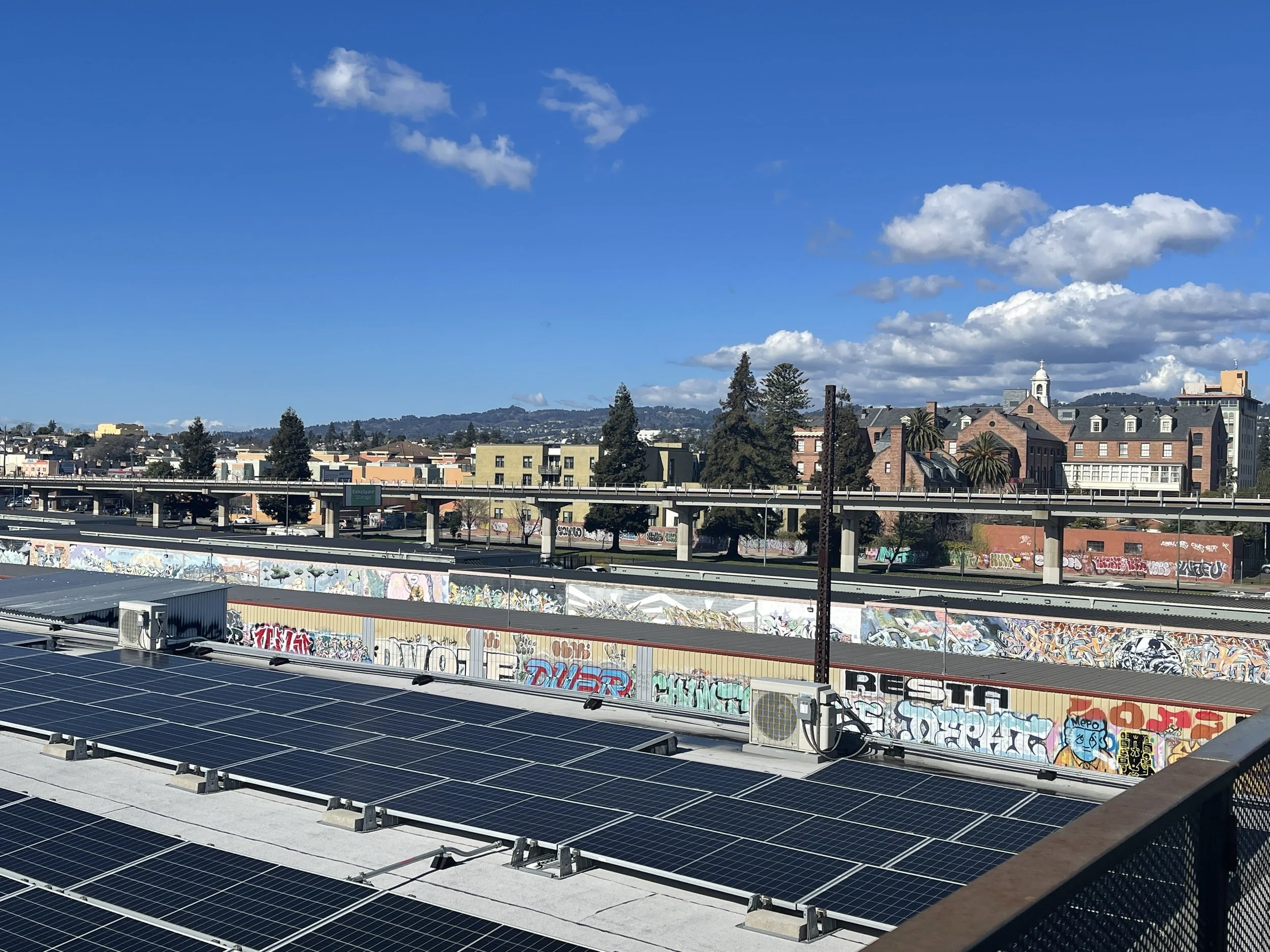Studio Visit & Interview with Darin
By John Vochatzer
Darin is an artist who exists between many different worlds. In a way mimicking his early life growing up back and forth between Los Angeles and various parts of the Bay, his art likewise is like a complex inner dialogue between different styles and creative personas that he’s explored in his life. Working within the movement of “post-vandalism,” his work sits on the confluence of graffiti/skate culture from where he is rooted, and the world of commercial mural gigs and high end design that he is currently exploring. What makes his work truly interesting and original however is the way in which these different identities of his intersect, and the ambiguity as to where one starts and the other ends. Looking at his portfolio, a wall he’s painted could just as easily be a commission for a private office or an unsolicited city wall, and vice-versa.
Working out of Artthaus Studios in the Frutivale neighborhood of Oakland, Darin approaches his work with a strong level of discipline, but this doesn’t ever compromise his sense of play and experimentation. One thing that particularly struck me about him is this drivenness to constantly progress. He is always seeking new knowledge and for new opportunities to step outside of his comfort zone. It’s as if every creative undertaking of his is an entirely new venture, and it’s inspiring and refreshing to meet artists like him whose entire MO revolves around this desire to grow and learn. And the fact that he manages to do so while keeping his artistic identity wholly intact, is what makes it truly an impressive feat.
Lastly, it’s always a nice icing-on-the-cake when an artist does solid and original work, and also happens to be a cool and down-to-earth person. Working with Darin as one of the artists in our current group exhibit “Songs to Swoon For” was a huge pleasure as he is someone who has been super proactive, super receptive to feedback, and with absolutely zero frills or silly artist ego nonsense. And I know I say it often about new artists I get to know, but Darin is someone of whom I’m especially interested in keeping an eye on his work—as I’m sure it’s never going to stagnate or cease evolving.
Interview
Hey Darin! Thanks for letting me come check out your studio the other day. For those who don’t know you, can you give us a quick introduction about who you are, and the type of art that you do?
It was my pleasure! My name is Darin. I’m a visual artist currently based in Oakland, CA. The type of art I do…that’s a bit of a moving target but I guess you could say I make abstract, minimalist pieces on walls and in a more traditional fine art practice.
Your studio is located in the newly renovated Artthaus Studios in Oakland. This building has a lot of cool history in it as a graffiti spot, and now homes workspaces for a lot of cool artists and other creative practices. Want to talk a little bit about this place and what’s it like having a studio there?
Definitely. Being in this space is really cool for a lot of reasons. One selling point was how they respected and preserved the history this building has. As you mentioned, this was an old graffiti yard and you can still see original Dream and Vogue tags which is rad.
Artthaus Studios in Oakland, CA.
Currently, this space houses an insane variety of people and businesses which is inspiring in itself. Everyone that has a space here is an independent business owner in one way or another and feeding off that energy is a good feeling. Some days I just come in with my headphones on and go straight to my studio, while other days I may post up in the common area and shoot the shit with some coffee and my laptop. I like the variety this space allows me to explore and it encourages the dichotomy of being creative and fostering your professionalism.
I really appreciate the collage aspect of your work, and the confluence of different styles and mediums that combine in both your murals and your fine art. What’s the process like for you in making a piece? And how do your fine art and mural practices inform one another?
Appreciate that. It’s an ever-evolving process. It seems like every day I am learning a new trick or tip in creating art, especially in the studio. I’m admittedly very green to a lot of the “traditional” fine art practices and even though it’s something I’ve essentially been doing my whole life, I’ve always kind of—just done it. I kid you not, I just learned how to properly hang a canvas a few weeks ago.
I’ve been lucky enough to be good friends with some people I consider to be eons ahead of me in their artistic knowledge and through osmosis, I’m always finding new materials and practices to utilize. With all that being said, my process has a lot to do with what is inspiring me at the time—sometimes I get super stoked on a weird mark on the ground, take a photo of it and use that as the basic aesthetic for the forms in my work while other times the process is more regimented or more intuitive—I’m still figuring it out. I will say this, I literally make myself spend a certain amount of time in the studio which is new for me and has, so far, proven to be the most effective way to be productive. With the murals and painting on walls, it’s mostly the same. I’m honestly more accustomed to working on walls so I’m sure that intrinsically informs my studio work and vice-versa.
Along with murals, you have quite the background as a graffiti writer—and now the lines between your graffiti practice and your mural practice are blurred in a lot of really interesting ways. Can you talk to us a little bit about this?
This always weighs heavy on my mind but I’ve been doing my best to embrace it. The main way the lines are blurred is probably the way I use materials. I’m not above using old bucket paint, spray paint and fancy stuff all on one piece or wall. In graffiti and working on walls, ingenuity and resourcefulness are a bit of necessity and, for me, a way to keep things interesting.
I also appreciate you educating me on these movements of Post-Graffiti and Post-Vandalism. For our readers, will you reiterate these concepts and tell us about how they are embodied in your work?
Post-Vandalism, Post-Graffiti and whatever other term you want to use to characterize the aforementioned movement can basically be broken down like this: art in any form that expresses the ethos of graffiti that is created by people who have participated in a form of vandalism. One comparison would be the reactions that birthed expressionism or modernism—it’s basically a form of art birthed from participating in graffiti but doesn’t necessarily involve the rules (letter structure, bars, etc.). I feel like my work will always carry an element of this, even if it’s less blatant.
Skateboarding is a huge part of your life, can you tell us a little bit about your love for skating and how does it affect or influence your art practice?
I’ve been skateboarding since 1998. My parents bought me a plastic Hot Wheels board from Toys “R” Us for Christmas/Hanukkah that year, I learned how to ride on the carpeted hallways of our apartment building and I was absolutely hooked. Skateboarding gave me a creative and physical outlet all the while allowing me to meet my absolute nearest and dearest friends. There was a nearly a 20 year period, with a few dips, where skateboarding was my absolute focus and I can honestly say at a few points I was pretty damn good at it.
Darin skateboarding in Los Angeles, circa 1998-1999.
I had some minor sponsorships and multiple homie flows but its was the first activity I participated in with such dedication that had basically no tangible reward besides respect from your peers and having fun. My entire work ethic stems from skateboarding and I can honestly say it taught me how to be persistent in working towards achieving my goals.
Any sort of successes I’ve had in art has been a direct correlation to learning tricks on my skateboard. Being involved in skating also exposed me to creative types who personified being a professional creative person—Ed Templeton, Mark Gonzales, Dylan Rieder (RIP), Kevin Long, Jerry Hsu, Marc Johnson, Jason Dill—there’s too many to name but that’s a free-flowing laundry list of a few influential people who have had an impact on me through both their skateboarding and creative output.
It was interesting hearing about your growing up back and forth between LA and The Bay. Can you tell us a little bit about how both places helped shape and form you as an artist? And what would you consider some of the biggest differences between the arts and graffiti cultures of each place?
It’s funny how similar but vastly different the two coasts of California are. Generally speaking, and anecdotally, in both the art and graffiti scenes, LA and the Bay Area were very different when I was “coming up,” so to speak, in the late 90s and early 00s. In LA, there were fairly rigid rules of what was considered to be art and graffiti , while at that time the Bay was seemingly more accepting and pushing the avant-garde, especially in graffiti (i.e. BKF and US crews). Being from literally both Oakland and West LA exposed me to a huge pool of creatives with very different perspectives. Learning how to navigate through different schools of thought allowed me to be empathetic to the variety of mindsets present in the culture. Having one foot in multiple ways of thinking allowed me to push myself in different directions—respect the traditions and basics but also put your own flavor to it… at least that’s the goal, right?
A pivotal moment in your life and your trajectory as an artist was the passing away of your grandmother 8-9 years ago, and it was this catalyst that sparked you to get sober and start getting serious about your art. Can you elaborate on this a bit?
Yeah, that’s heavy and very true. My mother’s side of my family immigrated here from the war-torn country of Cambodia and went from being basically royalty to poverty stricken in the hoods of the city and East Bay.
My grandmother never learned English fully but was conversational. We would have these interesting talks through her broken English where I had a unique understanding of what points she was attempting to express. One thing she always told me was that she knew I had a lot of potential and was unrelenting in her belief of my capabilities. At the time, to be honest, a lot of her messages were heard on somewhat deaf ears. In my late teens and early 20s, I was somewhat of a fuck up but never bad enough to be fully concerning. I tended to walk the line between drugged up party goer and holding down a somewhat responsible life, but I was not living up to my potential in any way. My focuses were on partying, drugs, girls and graffiti—if I had kept living that way I would have likely been a burnout, in prison or just doing some mediocre shit.
Fast forward to my Grandmother’s death, I most literally held her hand as she died. I can’t tell you the exact words but she expressed that she was proud of me with the heavy undertone of “you could be doing a lot better.” After quitting my job on the spot to be with my family and help with post-death arrangements, I stopped doing hard drugs and started working two more “serious” jobs. I basically got my shit together and lived a fairly squeaky clean life for a few years. I’m still sober to this day, with a few exceptions (micro-dosing shrooms at my sister’s wedding), but I don’t drink, I don’t smoke weed or do hard drugs of any kind. To each their own, but I have an addictive personality and I can’t partake in the aforementioned activities or it’ll be bad news.
Something we can both commiserate on is the incessant overthinking about art. You in fact just took a second job for the first time in years with the intention of being able to ease some of the tension of your mural work and be able to focus on your less-stressful fine art practice some more. How’s this going so far?
It was nice to commiserate over that!
Overthinking is a curse I have and even worse when it comes to stuff I genuinely care about.
The job I took has literally nothing to do with art—it’s not the most fun but it’s alright. The main goal of the job was to shut the monkey mind off while simultaneously making enough money to cover my bases (rent, food, car etc.) so I can have more creative freedom and not rely solely on commercial mural jobs for income—it’s been an adjustment but so far it seems to be going well.
Eventually, I’d like to get back to art full-time but right now I feel like I need more structure in my life which allows me to cherish my time to be creative. I’m trying to embrace the philosophy of more freedom in limitations.
You’ve already had a couple group exhibits this year, and a solo show coming up soon. Want to talk a little bit about all the cool stuff you’ve got in the works? And where would you like to be taking your work next?
Thank you guys for having me in the “Songs to Swoon For” group show! That was truly a surprise and honor.
Additional shoutouts to Paul Lukes for including me in a show in Colorado and Rachel Wolfe for having me in her inaugural gallery show.
As you mentioned, I have a solo show coming up this year as well through Burnt Oak Gallery in downtown Oakland. I’m also in a really cool public arts program through CSIG and ABG that has been exciting and, without divulging too much, it’s going to lead to some big positive steps.
As far as my work, I just hope to keep progressing in a positive and interesting way.
Have a good one and thanks for the opportunity!
